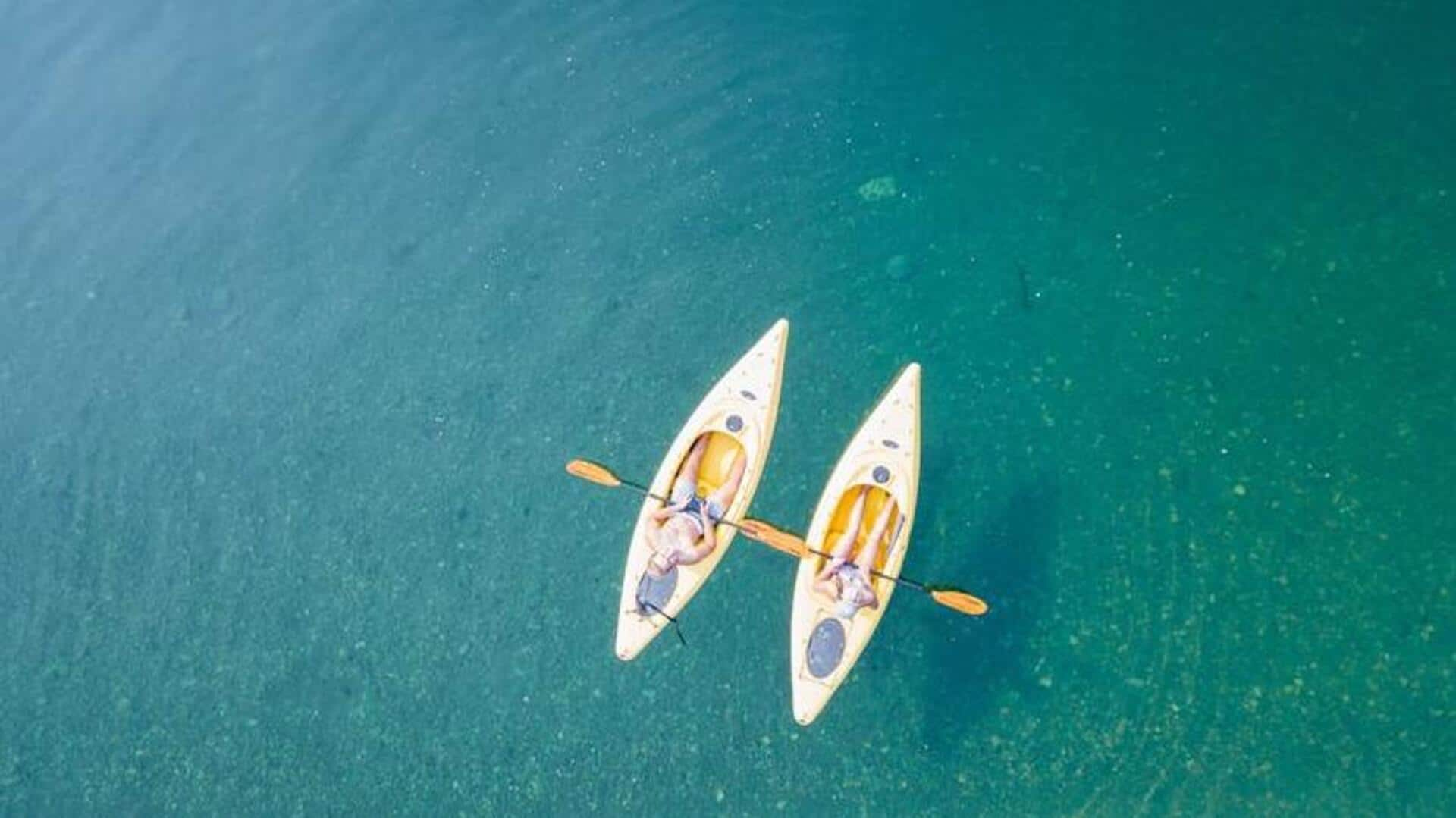
Kayaking at Ha Long Bay: An attraction you can't miss
What's the story
A UNESCO World Heritage site, Ha Long Bay in Vietnam, provides a one-of-a-kind kayaking experience. Its spectacular limestone karsts and emerald waters are a paradise for adventure-seekers and nature-lovers alike. You can discover hidden caves, secluded beaches, and floating fishing villages. The peaceful surroundings provide an opportunity to connect with nature and enjoy stunning views.
Timing tips
Best time to visit Ha Long Bay
The best time to kayak in Ha Long Bay is between October-April, when the weather is cooler, drier. The temperature during these months is between 15 degrees Celsius and 25 degrees Celsius, which is perfect for kayaking. The rainy season (between May-September) should be avoided as you would encounter heavy rainfall and little visibility on the water. Visiting during these months only adds to the experience.
Gear checklist
Essential gear for kayaking
While packing for a kayaking trip to Ha Long Bay, don't forget to include must-have gear like a life jacket, sunscreen, hat, sunglasses, and waterproof bags for valuables. A lightweight raincoat can also come in handy if you are caught in unexpected showers. You could rent equipment locally if you don't want to carry your own gear. But ensure everything is up to safety standards before hitting the water.
Adventure spots
Exploring hidden caves and lagoons
Kayaking gives you access to hidden caves and lagoons where larger boats cannot venture. Some famous spots include Luon Cave and Dark and Bright Cave where paddlers can glide through narrow passages into calm lagoons between towering cliffs. These places also let you spot wildlife including monkeys sitting on rocks or colorful birds flying in the air.
Cultural awareness
Respecting local culture and environment
When you go kayaking in the Ha Long Bay, it's important to respect the local culture and environment. Abide by the guidelines for waste disposal and interact cautiously with floating village residents. While these communities rely on tourism, they struggle with conservation issues owing to the increasing number of visitors. Responsible tourism practices are important to preserve these places without affecting their natural resources.